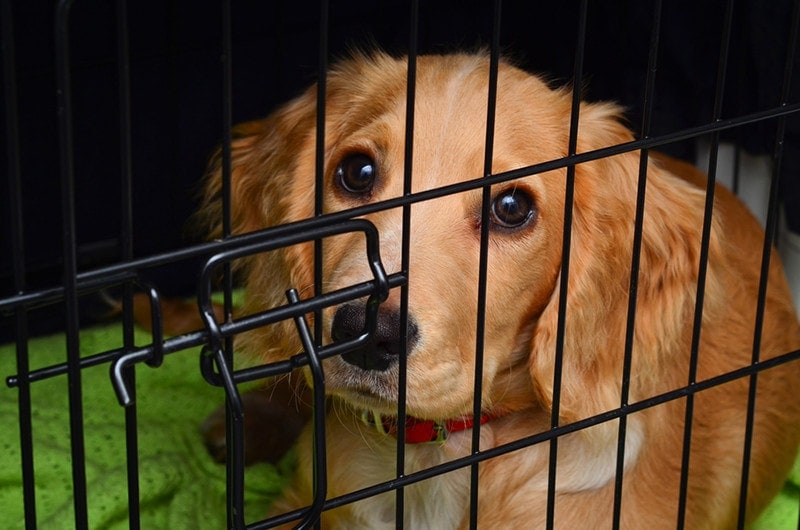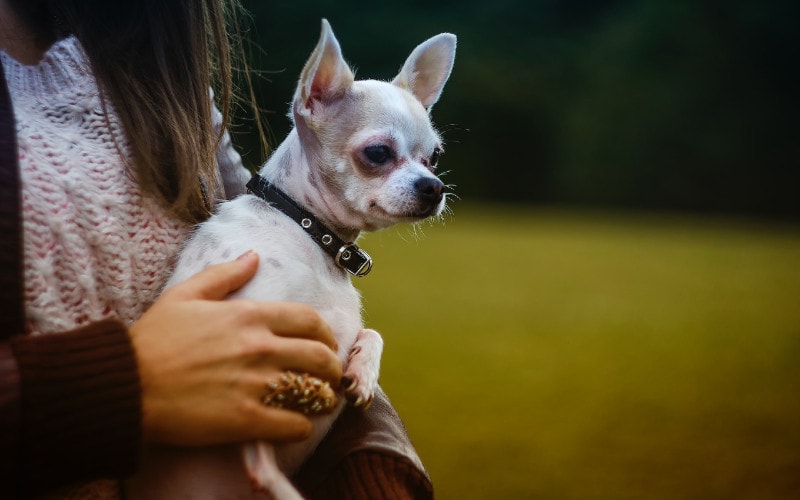It’s very disturbing and heartbreaking when you encounter dog abuse, like if you see your neighbor hitting their dog or know a malnourished pet that isn’t being fed enough. There’s no magic solution to solving animal abuse, but you can do your part through careful observation, evidence collection, and getting the appropriate authorities involved. It’s also very important that you do not endanger yourself during this whole process. Let’s talk below about how you can identify abuse and practical steps on what you can do to help end it in a way that’s safe for you.
Before we begin, please note that we often refer to dogs in this post, although abuse and neglect can apply to any animal in the care of a human.

The 6 Tips for Identifying and Reporting Animal Abuse
1. Identify Abuse
Animal abuse generally falls into neglect or outright abuse. Both of these can cause serious damage to an animal’s physical and mental health, possibly causing long-term side effects like fear or anxiety as well.
- Neglect is when a dog is ignored and deprived of a suitable living environment. You can spot if a pet is neglected if they appear emaciated and underfed, are kept in a crate for long stretches of time, or don’t get enough exercise. A lack of veterinary care like checkups is a form of neglect, and so is leaving a pet outside or in a car in extreme weather. For emergency cases of animals left in cars, in particular, you should act swiftly about contacting authorities. Degrees of neglect can muddy reporting severe cases, so you’ll need to have ample proof before reporting.
- Abuse through deliberately harming an animal by hitting or yelling at them can immediately threaten a pet’s life or cause tremendous pain and injury. Visible injuries like limps or wounds are obvious signs, but cases of abuse can be spontaneous and hard to prove. Abuse also includes organized dogfighting, which carries higher penalties than individual abuse cases. Specific accusations of abuse will require a high burden of proof, so bear this in mind before proceeding.

2. Learn the Laws
Animal abuse laws can vary depending on where you live, making it hard to learn concrete info on what exactly constitutes animal abuse. You can search for local and state laws on the subject or reach out to law enforcement or humane societies nearby for advice on what specific laws apply and when. Animal rights groups and lawyers dedicated to animal law are knowledgeable about the subject and may be willing to offer educational resources you can refer to.
Unfortunately, sometimes neglect and abuse laws don’t apply to all situations and authorities may be unable to do as much as you’d like. That’s why it’s even more vital to correctly identify and document abuse when possible. The last thing you want is for your report to not be taken seriously.
3. Substantiate Claims With Evidence
It can be challenging but not impossible to prove animal abuse. Photo evidence of neglect or abuse will greatly help your report, and the more specific, the better. Pictures of a dog left in dangerous heat, emaciated dogs, or video evidence of abuse will all help your case. Make sure that you’re abiding by any local or state laws that apply to video recording as well.
Even more helpful is if you can find other witnesses to corroborate your claims—another neighbor who’s seen the abuse, for example. Abuse reports with little evidence or very circumstantial evidence are less likely to be followed up on, so document, document, document!

4. Determine Who to Contact
Reports of abuse can be made to local law enforcement, animal control, the ASPCA, or local humane societies. Check this helpful link from the National Link Coalition for more resources on pinpointing what agency to contact about your incidence of abuse.
In general, calling 911 when there’s abuse currently happening is the right way to go. Ongoing cases of neglect will be harder to prove, but you should make as accurate and complete a report as soon as possible once you learn what’s happening. A delay in your report means a delay in investigation, so act quickly!
Reporting authorities have their own protocols on how to report abuse, but many allow anonymous reporting so you can keep your name out of the report. This is especially valuable if you’re reporting someone you know and fear retaliation.
5. Do Not Get Involved
When you learn about a case of animal abuse, it can be very tempting to get personally involved to immediately put a stop to it. However, that puts you in danger of being retaliated against by the animal’s owner. To have the best and safest chance at successfully reporting animal abuse, you should stay away from the person and their pet while authorities handle the situation.

6. Follow Up on Reports
Advocating for an abused animal can require you to follow up multiple times depending on the information disclosed, the type of abuse, and the completeness of your report. It’s important you trust authorities to do their jobs in a timely manner, but also that you follow up as recommended when you officially make your report. This may involve calling a number or going to a physical location for further investigation.

Conclusion
Animal abuse is insidious but can be fought by regular pet owners like yourself with persistence, bravery, and documentation. Decisive action is the best way to help an animal suffering neglect or abuse, and you should observe proper reporting protocol while keeping a safe distance for your own safety.
Featured Image Credit: Paul’s Lady, Shutterstock










